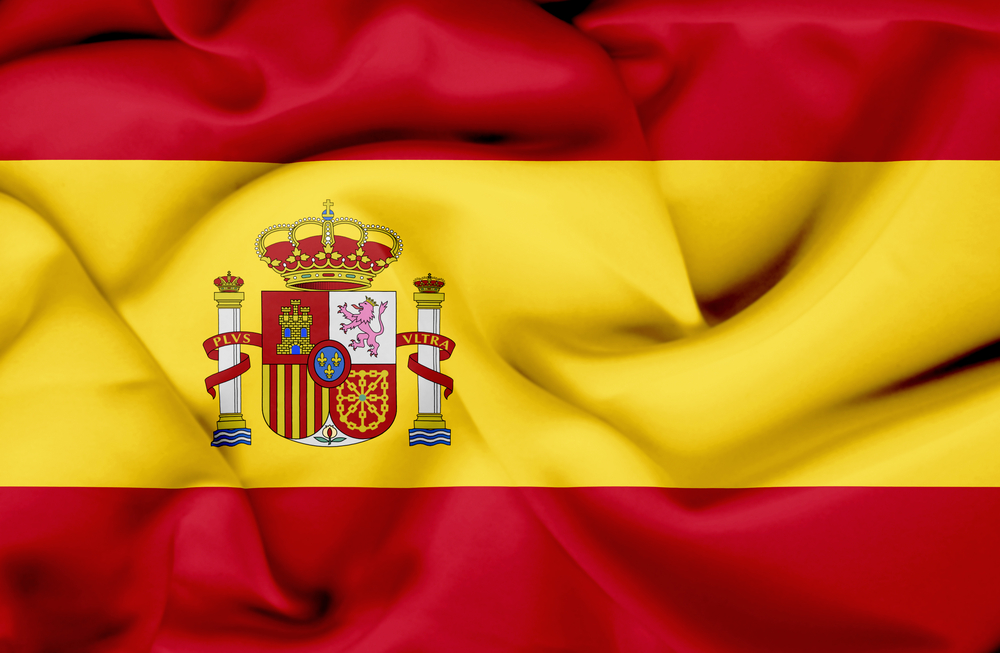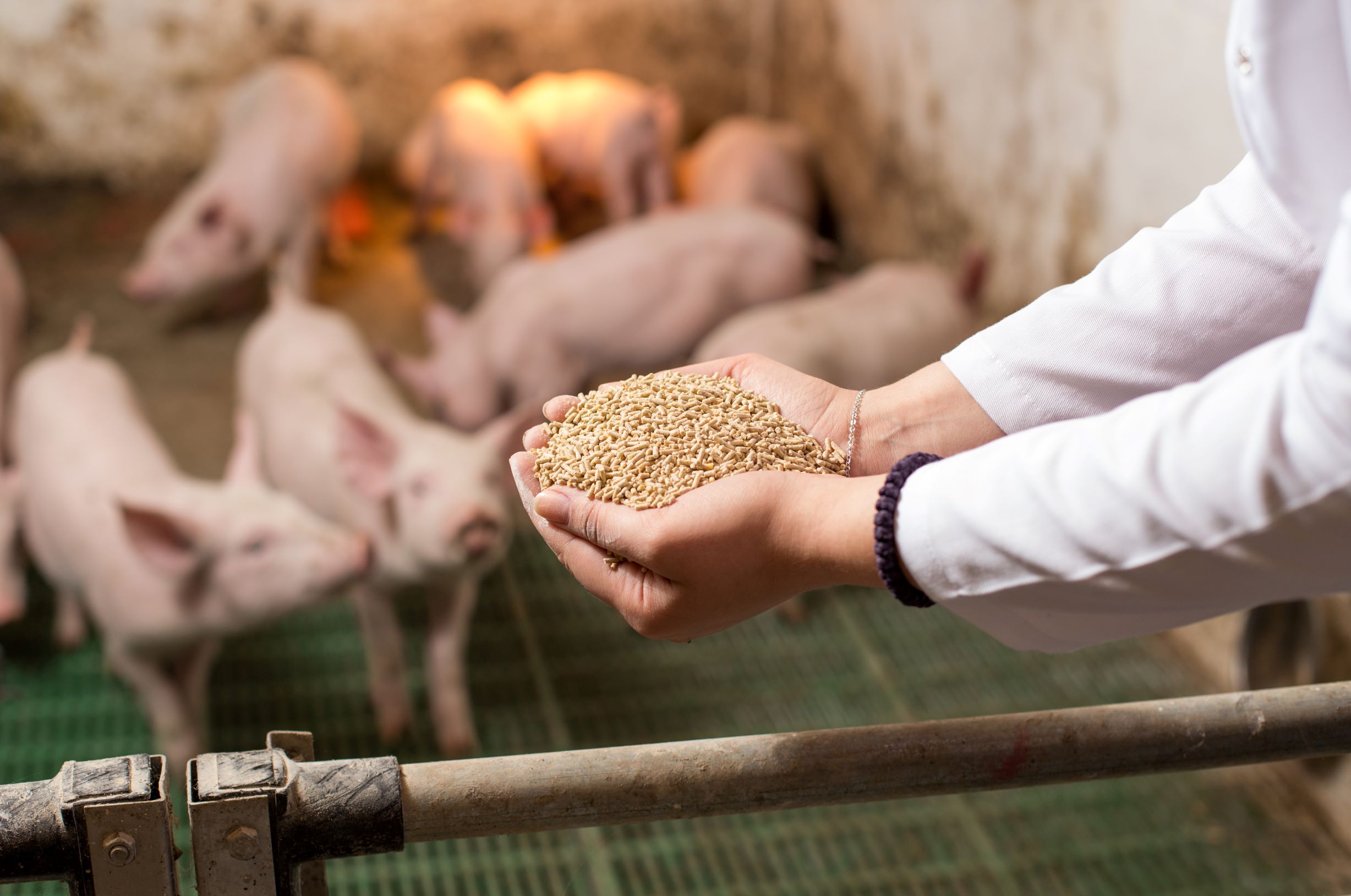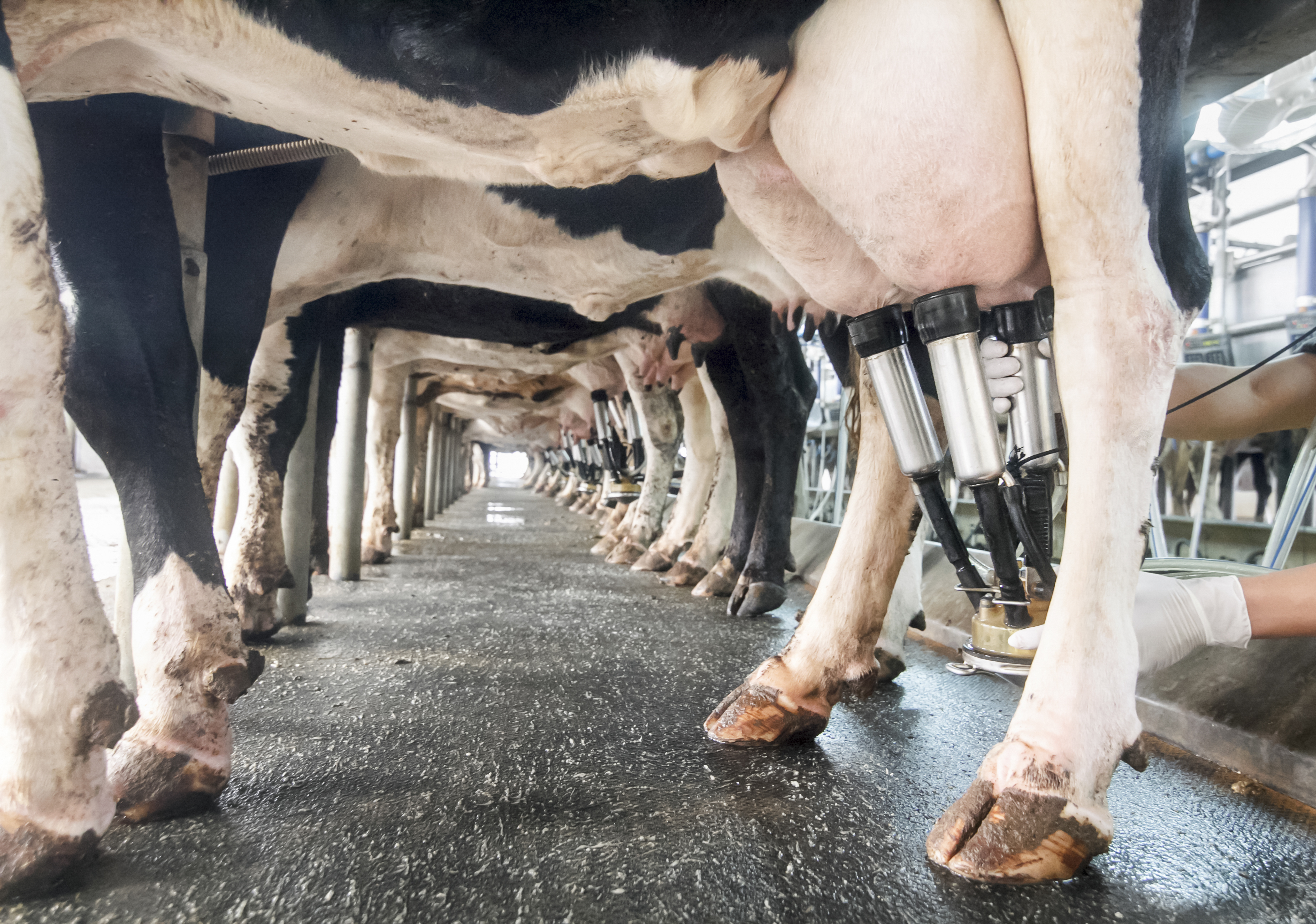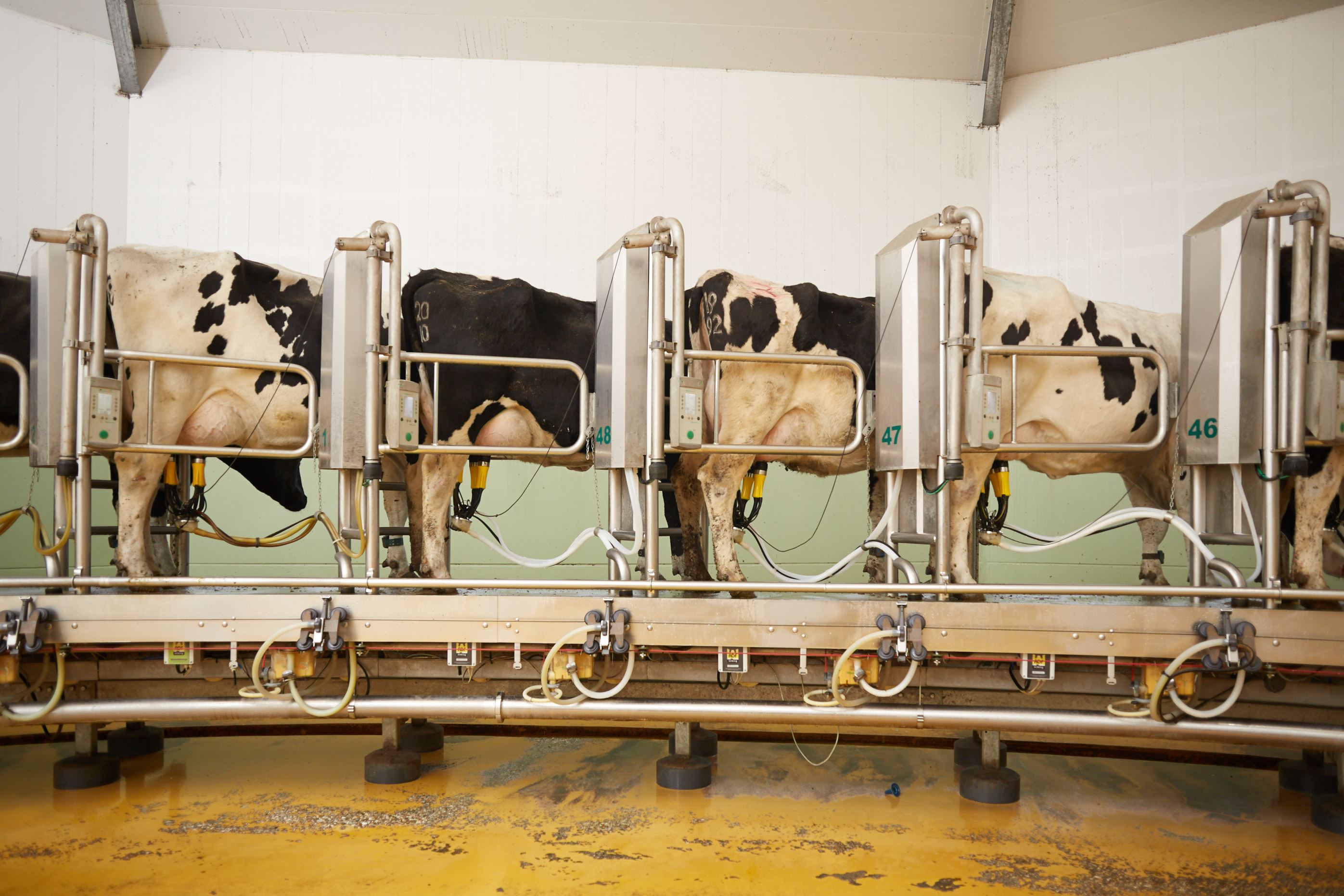



Weekly beef and dairy digest: analysis of Spain's meat sector
In this week's beef and dairy digest, read about Spain's meat sector and China's changes to its feed guidelines.US beef sales are bouncing back
Net sales of 24,600 metric tonnes (MT) reported for 2021 were up 57% from the previous week and 38% from the prior four-week average. Increases primarily for South Korea (7,800 MT, including decreases of 500 MT), Japan (6,200 MT, including decreases of 700 MT), China (3,100 MT, including decreases of 100 MT), Mexico (2,100 MT, including decreases of 100 MT), and Taiwan (1,900 MT, including decreases of 200 MT), were offset by reductions primarily for Italy (100 MT).

Exports of 19,500 MT were up 2% from the previous week and 4% from the prior four-week average. The destinations were primarily to South Korea (6,100 MT), Japan (4,900 MT), China (3,600 MT), Mexico (1,400 MT), and Taiwan (1,100 MT).
China issues guidelines to lower corn, soymeal in feed rations
China’s Ministry of Agriculture and Rural Affairs has released guidelines on reducing the use of corn and soymeal in hog and poultry feed rations, a move seen accelerating what market forces have already started relative to the use of alternatives to corn such as wheat as corn prices have risen.
The ministry indicated the new guidelines were aimed at improving the use of available materials and setting a formula that better suits conditions within China. The guidelines listed rice, cassava, rice bran, barley and sorghum as good alternatives to corn and noted that rapeseed meal, cottonseed meal, peanut meal, sunflower meal, distillers dried grains, palm meal, flaxmeal, sesame meal and corn processing byproducts were soymeal alternatives.
There were also suggested feed formulations that differed depending on the region of the country. Those feed formulations include recommendations that distillers’ dried grains (DDGs) could be used as a substitute. That is an interesting recommendation given trade restrictions on DDGs and a lack of major ethanol production within China.
Analysis of Spain's meat sector
The Spanish meat sector is working on economic, social, and environmental sustainability, according to a report from USDA. The sector, especially the pork industry, continues to grow consistently in volume and exports. The Spanish meat sector is also committed to improving the environment. According to industry contacts, over the last 15 years, the pork industry reduced Greenhouse Gas (GHG) emissions by more than 40% and continues to make progress towards achieving a neutral climate impact by 2050, in line with the European Green Deal.

In addition, the Spanish cattle sector developed a project aiming to improve GHG emissions through innovative livestock practices to significantly reduce carbon footprint by 15% by 2025. Following new consumers’ demand, especially in terms of animal welfare, the Spanish meat industry also developed a voluntary animal welfare certificate for each type of livestock production that goes beyond what is currently required under the EU regulations.
The voluntary certification guarantees the animal welfare at all levels of production. Created by a scientific committee, the certification also includes the participation of organizations for the protection and defense of animals. The voluntary Spanish animal welfare certification program was reportedly created to benefit both the producer and the consumer, to provide transparency of the production chain, and to improve competitiveness.
In 2020, Spain’s total swine slaughtered grew 6.5% compared to the previous year to 56.461 million animals. In addition, Spanish pork meat production rose 8.2 % to 5 million tonnes. These final Spanish pork production figures were higher than the sources’ expectations and reached continued record levels, mainly derived from high Chinese pork demand and the outbreaks of African Swine Fever (ASF) in Northern EU.
The Spanish pork production grew significantly during the last quarter of 2020 as a result of higher Spanish imports of live hogs for slaughter from Northern EU. Despite the COVID-19 pandemic, Spain overcame initial disruptions, slaughterhouses were able to work at normal capacity to satisfy domestic and export demand.

According to Trade Data Monitor (TDM), in 2020, total Spanish pork exports increased 21.5% to 2.7 million metric tonnes (MMT) carcass weight equivalent (CWE) and grew 23.7% in value to $7.2 billion. This increase was primarily driven by higher volume of exports to non-EU countries (about 60%), shipped mainly to China, Spain’s new chief destination for pork exports.
Similarly, in 2020, Spain´s beef exports grew 3.8% in volume to 231,000 MT CWE and valued at $903 million. Over the last five years, Spain´s beef industry has worked to re-orient its exports to traditional markets like Algeria and Morocco towards new strategic markets, namely Canada, Indonesia, Vietnam, Hong Kong, and recently opened markets in Japan and the Philippines. During the pandemic, Spanish pork and beef exports partially alleviated the loss in meat sales through the Spanish hospitality sector which was severely impacted by mandated measures in response to COVID-19.
Conversely, due to the closure of Spanish Livestock Exports Keep Trotting to non-EU Markets 3 the Hotels, Restaurants, and Institutions, (HRI), Spanish imports of meat declined sharply. Spanish imports of beef were particularly impacted as these are primarily destined for the hospitality sector.
International dairy market news
Western European overview
In Germany, the largest milk producing nation in Western Europe, there is hope that the tide has turned for the better. Estimates of weekly milk production in early April finally suggest that milk production is not only seasonally advancing, but also increasing YOY. With generally strong dairy product prices, maintaining production increases would be most welcome. EU exports of milk during January 2021, 91,980 MT, decreased 0.4% from January 2020 according to Eucolait.
Eastern European overview
Ukraine dairy export volumes during January 2021 and percent change from January 2020 according to CLAL data made available to USDA are cheese, 400 MT, +24.4%; WMP, 200 MT, -41.2%; SMP, 1,300 MT, +58.3%; and butter, 700 MT, -8.0%.

USDA’s latest dairy market news
Cheese highlights
After a respective bump up on both block and barrel prices on 19 April, cheese market prices have stumbled each subsequent day following. Contacts suggest it is due to the announcement from the USDA regarding a redirection from the Farmers to Families Food Box Program. Still, contacts say food service demand has picked up week by week.
Demand for barrels has increased, naturally, with food service upticks. Therefore, Western cheese contacts relay tightening barrel supplies. Spot milk prices ranged from $5 under to $1 under Class. Although milk prices are edging higher, there is still an abundant supply for cheesemakers throughout the nation during flush.
Butter highlights
Cream supplies are ample in the West but tighter throughout the Central and East regions. Ice cream producers are pulling heavier cream volumes to build inventory heading into summer, but butter churns are maintaining seasonally active schedules. Regionally, retail orders vary, but food service demand continues to build nationwide. Butter market tones are stable. Bulk prices range from 1.0 to 8.0 cents above the market across the country this week.
Fluid milk
In areas of the country, spring flush milk output volumes are beginning, while reports from other areas already point to its peaks’ end. Warmer temperatures in Florida and parts of the Southwest have market participants noting peak milk output is in the books. In California, the rate of increasing output has slowed. Food service demand across the dairy sector has sprung to life in recent weeks.
Class I/balancing milk demands continue to steadily increase. Cheese makers in the upper Midwest reported spot milk prices shifted slightly higher, from $5 to $1 under Class. Cream availability continues to slowly tighten in the Midwest and East, while Western end users are holding to steady pricing. In the Midwest, butter churners are selling off cream. Spot cream multiples are 1.3150 to 1.40 in the East, 1.28 to 1.34 in the Midwest, and 1.05 to 1.28 in the West.

Dry products
Low/medium heat non-fat dry milk (NDM) prices are generally higher throughout the US regions this week. Domestic and international demands are reportedly hearty. The market tone has strengthened. High heat NDM prices are somewhat mixed. Market participants continue to report a limited supply in the market. High heat NDM markets are mostly stable.
Dry buttermilk prices are up. The current demand is good. Dry buttermilk market tones are solid. Dry whole milk prices are higher on light trading this week. Dry whole milk pricing is appealing to some export buyers, compared to prices on the international markets. Dry whey prices are mostly higher. The demand is holding a firm tone for the near term. Dry whey markets are firm. Whey protein concentrate 34% prices are fairly steady. The top of the mostly price series increased this week. Market activities are a bit slower. Lactose prices are unchanged. Current demands are steady to strong. Lactose markets are mixed. Prices for acid casein and rennet casein are higher this week. Export demands have heightened.
February 2021 milk sales (FMMO)
3.6 billion pounds of packaged fluid milk products were shipped by milk handlers in February 2021. This was 3.2% lower than a year earlier. Estimated sales of total conventional fluid milk products decreased 3.8% from February 2020 and estimated sales of total organic fluid milk products increased 6.8% from a year earlier.
March Consumer Price Index (BLS)
The Consumer Price Index (CPI) for the all food category is 271.8, up 3.5% from 2020. The dairy products index is 229.2, up 1.6% from a year ago. The following are the March 2020 to March 2021 changes for selected products: fresh whole milk is +2.5%; cheese, +2.7%; and butter, -1.9%.

April supply and demand estimates (WASDE)
Dairy production for 2021 is raised from last month, primarily on increased cow numbers. The 2021 fat basis import forecast is reduced while fat basis exports are raised on higher shipments of cheese. On a skim-solids basis, the import forecast is reduced on lower imports of milk proteins and several other dairy products while the export forecast is raised on strong gains in shipments of skim milk
powders and whey.
However, lactose shipments remain relatively weak. Product price forecasts are raised on improving demand, both domestically and in international markets. Prices of cheese, butter, non-fat dry milk, and whey are raised, boosting both Class III and Class IV prices. The 2021 all milk price forecast is raised to $18.40 per cwt.
US retail report (DMN)
Ice cream in 48 to 64-ounce containers is the most advertised conventional dairy item this week, featured in 42% more advertisements than last week. The weighted average price is $3.15, $0.07 lower than last week. There are no ads for organic 48 to 64-ounce ice cream.
Advertisements for conventional 1-pound blocks of cheese increased 243% this week, with the weighted average price dropping $0.97 from last week, landing at $3.96. Organic 1-pound blocks of cheese are not advertised. The most frequently advertised cheese item this week, in both conventional and organic coolers, is 8-ounce shred cheese. The weighted average price for 8-ounce shred cheese is $2.49 for conventional and $3.54 for organic, resulting in an organic premium of $1.05.
Read Jim Wyckoff's analysis of the global swine sector on The Pig Site.
TheCattleSite News Desk
IMPORTANT NOTE: I am not a futures broker and do not manage any trading accounts other than my own personal account. It is my goal to point out to you potential trading opportunities. However, it is up to you to: (1) decide when and if you want to initiate any traders and (2) determine the size of any trades you may initiate. Any trades I discuss are hypothetical in nature.
Here is what the Commodity Futures Trading Commission (CFTC) has said about futures trading (and I agree 100%): 1. Trading commodity futures and options is not for everyone. IT IS A VOLATILE, COMPLEX AND RISKY BUSINESS. Before you invest any money in futures or options contracts, you should consider your financial experience, goals and financial resources, and know how much you can afford to lose above and beyond your initial payment to a broker. You should understand commodity futures and options contracts and your obligations in entering into those contracts. You should understand your exposure to risk and other aspects of trading by thoroughly reviewing the risk disclosure documents your broker is required to give you.



